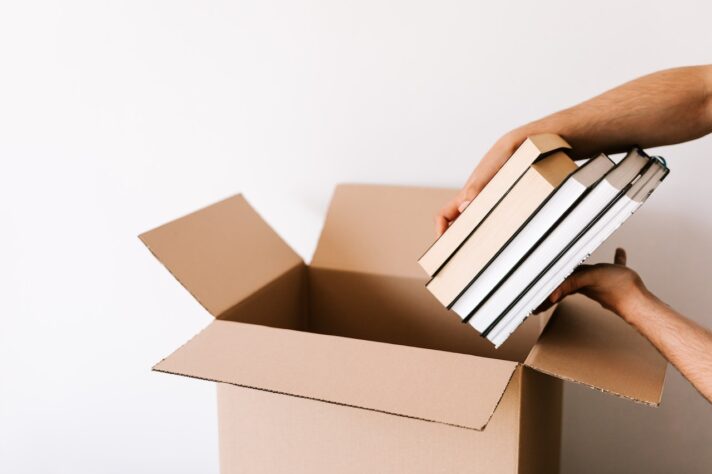Are you planning on moving soon? Then you should consider making a household inventory list to help you through your packing task. Having a checklist to refer to as you slowly pack your home makes the whole thing a lot easier. It will also help you manage your time better, as well as keep track of all the work you’ve done so far. But most importantly, it is a necessity if you’re planning on getting an insurance plan for your belongings during the relocation. Having insurance will also be important if you need to claim damage later on. Not sure how to make a good checklist? Here are some tips to help you do it.
Start by writing it all down, and then organize it by specific categories.
Create a Printable Worksheet for Your Household Inventory List
No matter if you are relocating for a relationship, or with kids, or even moving during holidays, the organization will be the key to a successful relocation. Before you start writing down all the belongings in your home, you should prepare a spreadsheet. This way, instead of having to draw a new table every time you fill out a piece of paper, you can simply print out several copies of the spreadsheet. Within the table, try to include information such as the box the things are located in or the rooms they belong to, life situations they are related to, purchases you need to make, the property you need insurance for, etc.
If you’ve decided to hire movers, you can also include the number of the company that you planned your moving budget for. That company will take care of moving services and packing, schedule the auto shipping date and time if you need to transport your car across the country, and all other moving essentials you’ll need. If you’re relocating to the suburbs you can list different neighborhoods, house-hunting options, etc. However, the exact characteristics of the table will depend on the listing method you choose to apply. But we’ll get to that later. The proper organization is the key to everything, it will help you keep things under control and avoid getting relocation depression, or even anxiety about moving out.
Create a List of Everything in Your Home You Like
Now that you have a template for your relocating to another state checklist, it is time to start writing things down. Now, this is the tricky part. You need to ensure that you have a well-developed strategy to help you organize your belongings. Otherwise, the whole checklist will be pretty pointless when it comes to packing and packing materials for moving, even if you don’t have a lot of stuff and you’re moving into a smaller home. If you don’t use something you own, make a list, and donate unwanted items to reduce the costs of moving services. As far as insurance and claims go, it doesn’t really matter how you decide to organize your spreadsheet. To help you decide which method to use, we’ve decided to describe some of our top favorites.
Different Ways to Make a Household Inventory List
Here are several most effective strategies for dividing your belongings into categories and inventorizing them. Regardless of the option you go for, make sure you can email it, or keep it in a digital form because a piece of paper can be easily thrown away or ruined during the move-out cleaning process. That is one of the common moving mistakes we all make and it can easily trigger your moving stress. So keep it on your phone or laptop, and send it as an email to have a backup copy of all contents. After all, your entire life is on that list, and in case of any disaster, you will be more organized.
- By rooms. Most people claim this is the most obvious and easiest method. All you have to do is go by rooms and write down everything in each one. For example, you could assign one piece of paper for each room, write down the name at the top and take it from there. Additionally, you could also divide each category into subcategories such as “clothes“, “furniture” or “books.”
- By types of items. If dividing all your belongings into rooms seems redundant, you can simply get rid of that part you do not like and categorize everything by types of items. So in the category named “furniture,” you’ll write down every piece of furniture you have in your home. Additionally, you could add the room it belongs to next to it, in a separate column, just to keep things organized.
- By size. This method will prove to be super helpful when it comes to packing furniture, but making a checklist will be a little more complicated. Dividing your household belongings into size categories pretty much boils down to dividing them by the types of boxes and packing supplies they need. For example, property such as furniture will require a lot of bubble wrap and some blankets, but no boxes. Packing computers will require extra padding and Styrofoam. For small trinkets, you’ll need zip lock bags, while most items in between will require boxes of different sizes and packing paper. Unless you have some experience with packing tips and tricks, this method is probably not the best option.
- By priority. Another method that is very useful for packing but somewhat easier to execute is separating your belongings by priority. That is, write down the inventory of things you never or rarely use in one category, the things you use weekly in another, and the items you need every day in the last one. Naturally, the possessions that belong to the last category will be packed last, and some of them won’t even end up in boxes at all, but in your necessity bag. Also, if you want to get insurance for certain things, seclude them as well to keep them safe and to prevent any potential disaster
Of course, if there are any other methods you’ve thought of and want to give them a try, don’t hesitate to do so. The main advantage of moving alone is that you probably don’t have too much stuff, and you can do this quickly. However. if you are not relocating to a new city alone and plan on moving in together with your partner you might need to declutter before you start boxing up stuff. But keep in mind that whichever technique you choose, it’s important that you stay consistent in order to keep a clear record of your progress. Also, when you have everything listed and sorted unpacking after the move will be easy.
Extra Tips on How to Make a General Checklist, Room by Room
You now have a general idea of how to create a home item checklist. However, there are always some extra long-distance relocation tips and tricks that could improve your spreadsheet and make your job even easier. Here are some:
- Start small. Do not start without a particular order, jumping from one corner of your home to another. By picking a relatively empty or small room for the start of your checklist, you will give yourself time to get used to spotting all the items and writing them down. That is, you’ll be able to gradually develop the skill of making a detailed and precise checklist.
- Put similar objects together. If, for example, you have eight pairs of earrings, instead of listing each pair separately simply add the number of the pairs next to the entry to save space. The same goes for things such as jeans and t-shirts, and other pieces of jewelry. You can write it all in numbers, 5 pairs of earrings, 15 t-shirts, etc, numbers will keep track of the moving contents for sure.
- Take photos. Some people claim they often forget what they have because we pile so many things during our life. Hence, if you’re afraid you’ll lose track of things by simply writing them down, consider taking photos of packed contents, add some basic information into the description and that is it. This will make it much easier for you to track your progress if you’re a visual type.
- Get insurance. If you come across any valuables while writing down your checklist, consider getting extra insurance for them. The standard coverage that most moving companies offer will likely be too low for such objects and you won’t be able to claim damages if a disaster occurs, so make sure you have all the numbers before you opt for something and do not forget to take a photo inventory for insurance. Insurance is essential especially when you are moving electronics such as big TV.
- Online app for checklists. You can get much-needed help from a life-changing free app and start organizing stuff around your home in no time, it is so easy and helpful. And you can continue using it in your new home as well, it would be an inventory of your belongings and help in case you forget where you left something.
- Keep the receipts. If you have new and precious belongings you want to keep safe do not forget to bring their receipts, especially because something like a minor disaster may happen due to moving, either to your or renters’ stuff. Also, receipts from the moving company, renters property insurance, or renters storage, etc.
- Note additional information. Consider adding any supplementary information you might find useful to each entry. This could be the brand of the item, box color, serial numbers, receipts, moving day tips on how to how to pack glassware, or packing silverware when moving, email address, or any other additional information. You may also want to add the value of the item for insurance purposes, so do not forget to estimate the value of household goods. Keep in mind that insurance companies usually take into consideration the current value of an item, not the price you bought it for initially.









